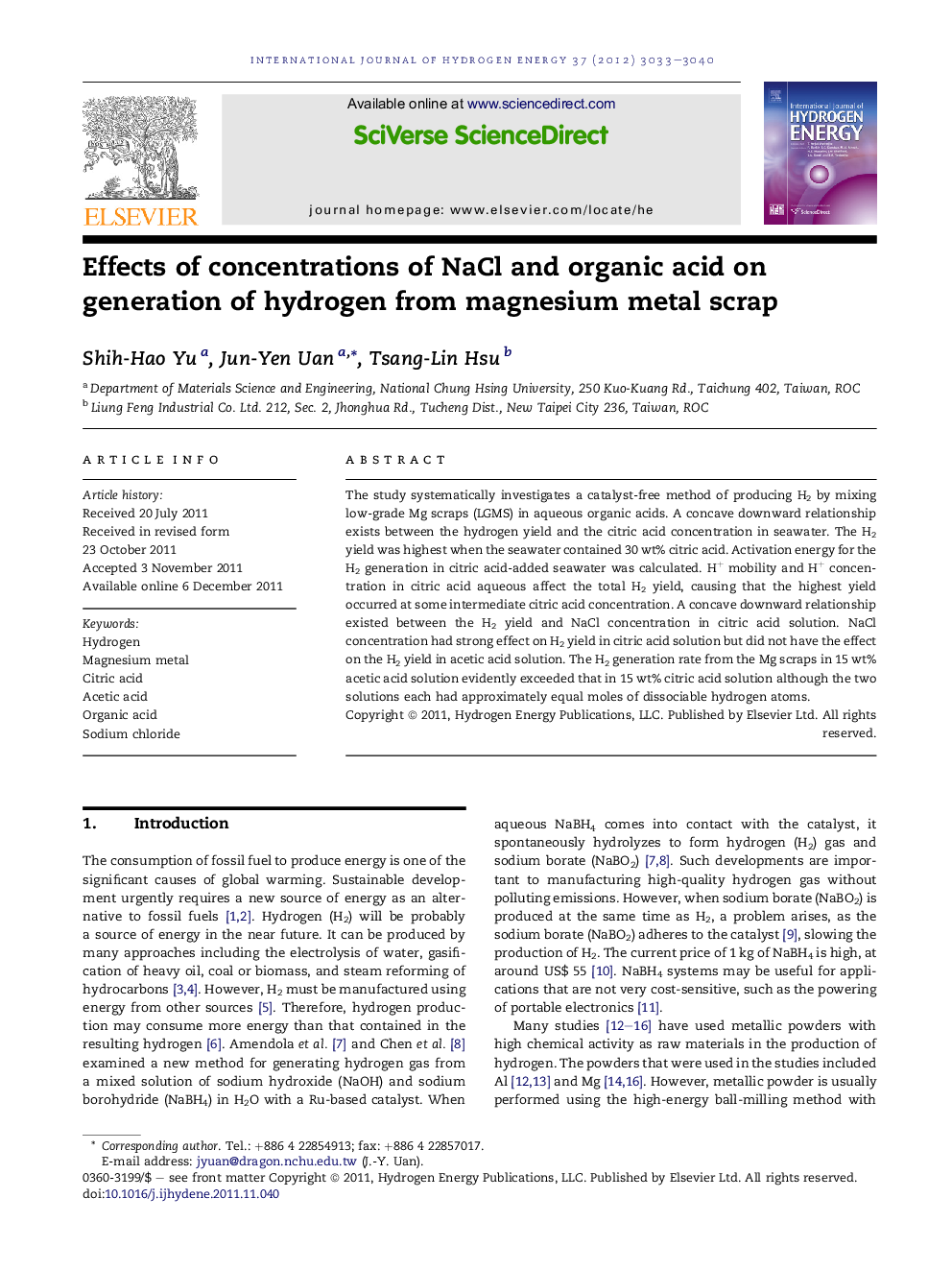| Article ID | Journal | Published Year | Pages | File Type |
|---|---|---|---|---|
| 1282309 | International Journal of Hydrogen Energy | 2012 | 8 Pages |
The study systematically investigates a catalyst-free method of producing H2 by mixing low-grade Mg scraps (LGMS) in aqueous organic acids. A concave downward relationship exists between the hydrogen yield and the citric acid concentration in seawater. The H2 yield was highest when the seawater contained 30 wt% citric acid. Activation energy for the H2 generation in citric acid-added seawater was calculated. H+ mobility and H+ concentration in citric acid aqueous affect the total H2 yield, causing that the highest yield occurred at some intermediate citric acid concentration. A concave downward relationship existed between the H2 yield and NaCl concentration in citric acid solution. NaCl concentration had strong effect on H2 yield in citric acid solution but did not have the effect on the H2 yield in acetic acid solution. The H2 generation rate from the Mg scraps in 15 wt% acetic acid solution evidently exceeded that in 15 wt% citric acid solution although the two solutions each had approximately equal moles of dissociable hydrogen atoms.
► Mixture of magnesium scrap and organic acid generated large volume of hydrogen. ► Concave downward relationship between hydrogen yield and citric acid concentration. ► H+ mobility and H+ concentration in citric acid aqueous affected the H2 yield. ► Mg scrap in acetic acid aqueous produced H2 at a high rate. ► NaCl in aqueous improving H2 yield, but no such improvement in acetic acid aqueous.
